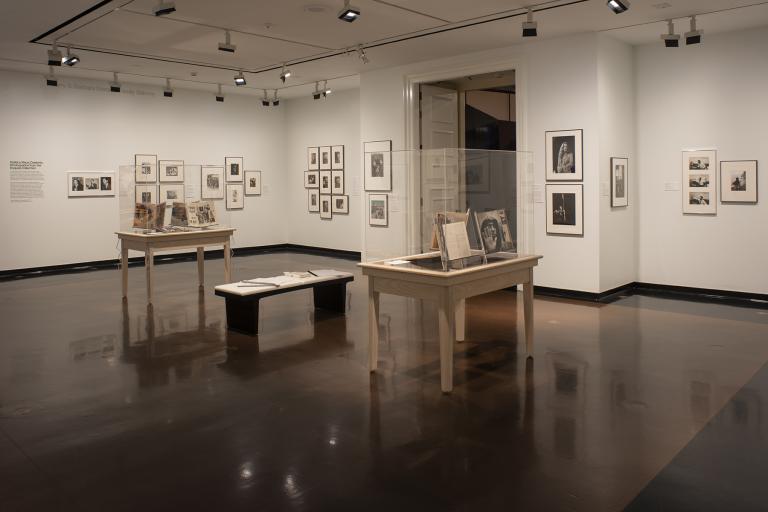“His attention is close, punctuated with pats, touches and quizzical looks, as here, with a schoolteacher who is one of his fans, in a Village eatery.”, Robert Adelman
Artwork Overview
Robert Adelman, artist
1930–2016
“His attention is close, punctuated with pats, touches and quizzical looks, as here, with a schoolteacher who is one of his fans, in a Village eatery.”,
circa 1964
Portfolio/Series title: "Everybody Knows His Name," published in Esquire magazine, August 1964
Where object was made: United States
Material/technique: gelatin silver print
Dimensions:
Image Dimensions Height/Width (Height x Width): 24 x 16.6 cm
Image Dimensions Height/Width (Height x Width): 9 7/16 x 6 9/16 in
Sheet/Paper Dimensions (Height x Width): 25.4 x 20.5 cm
Sheet/Paper Dimensions (Height x Width): 10 x 8 1/16 in
Mat Dimensions (Height x Width): 16 x 20 in
Image Dimensions Height/Width (Height x Width): 24 x 16.6 cm
Image Dimensions Height/Width (Height x Width): 9 7/16 x 6 9/16 in
Sheet/Paper Dimensions (Height x Width): 25.4 x 20.5 cm
Sheet/Paper Dimensions (Height x Width): 10 x 8 1/16 in
Mat Dimensions (Height x Width): 16 x 20 in
Credit line: Gift of Esquire, Inc.
Accession number: 1980.1030
Not on display
If you wish to reproduce this image, please submit an image request


